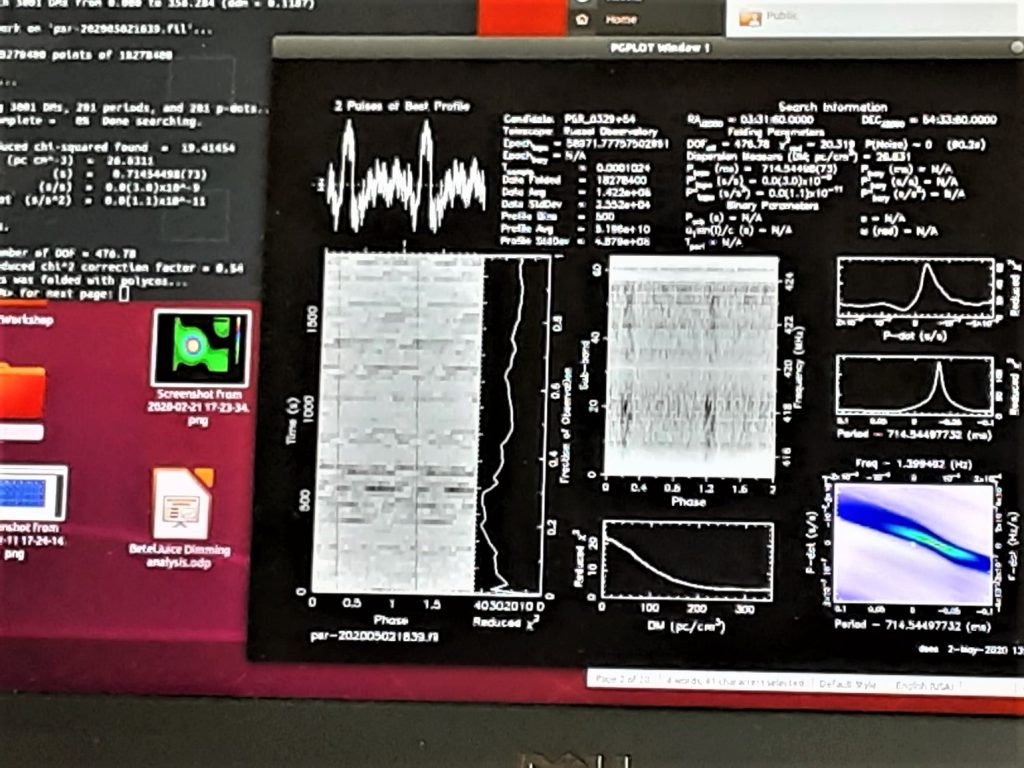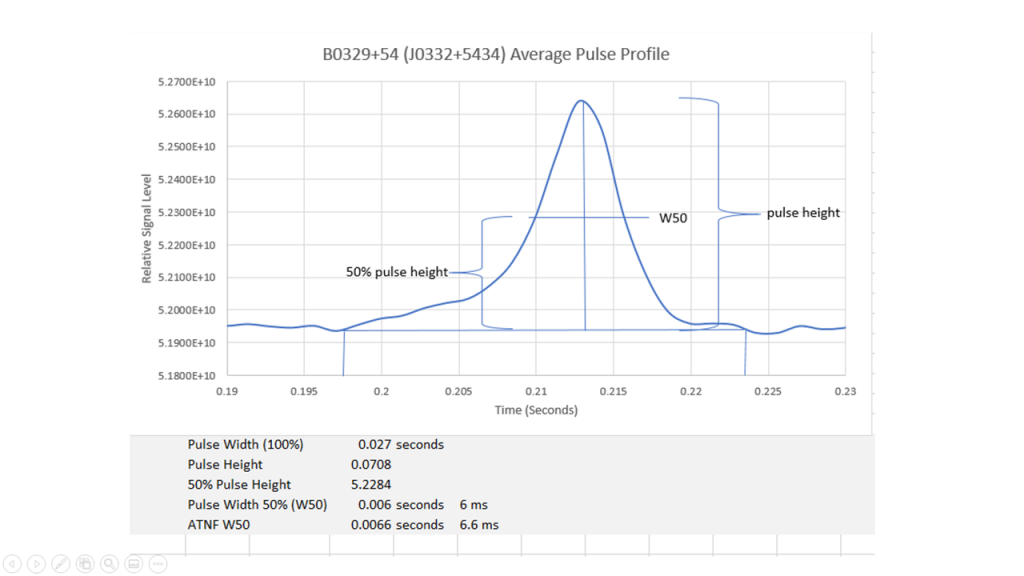By Dr. Richard Russel, DSES Science Lead.
The pulsar, B0329+54 (J0332+5434)1, was observed on the third try just before the team was ready to pack up for the day on Saturday, May 2, 2020. A final modification of the software defined radio settings was tried (all the gains were set to a minimum) did the trick.
The 60-ft dish was setup to manually track the pulsar using the System 1 tracking program software developed by Glenn Davis and Phil Gage. This program allowed us to track the pulsar’s position by keeping it in the bullseye.
We observed at a frequency of 420 MHz, with a bandwidth of 10 MHz.
The pulsar system was initiated last year by Steve Plock. Our mentor throughout the effort has been Dr. Joe Martin (K5SO) in New Mexico. Joe validated that we made a successful pulsar capture.

The GNU radio software was turned on to start the acquisition.

It should be noted that you cannot tell if you have the pulsar real-time because it is pulsing way below the noise level. After about 30 minutes, we stopped the acquisition and we moved the post-processing over to Bob’s new workbench.


Rich and Ray celebrate our first pulsar! (Bob’s taking the picture)

The first iteration of post -processing requires that the pulsar period be estimated with a program called TEMPO. The first iteration is shown below. It clearly shows a pulsar because of the prominent peaks and the lines tracing down the plots, however it is not quite set to the optimum period.

After some more iterations the final picture looked cleaner.

More analysis using the resultant data files allowed us to verify the pulsar as B0329+54 (J0332+5434).

Even the pulse width at the 50% height (W50) was estimated. The preliminary analysis below shows a measured W50 of 6 ms. The current value in the ATNF database is 6.6 ms. This is real close and confirms our observation.

More observation runs are planned and DSES can can consider itself one of the few amateur organizations to accomplish pulsar observations2.

Reference:
- PSR B0329+54 is a pulsar approximately 3,460 light-years away in the constellation of Camelopardalis. It completes one rotation every 0.71452 seconds and is approximately 5 million years old.[Ref: wikipedia]
- Our successful observation is reported in Neutron Star Group http://neutronstar.joataman.net/